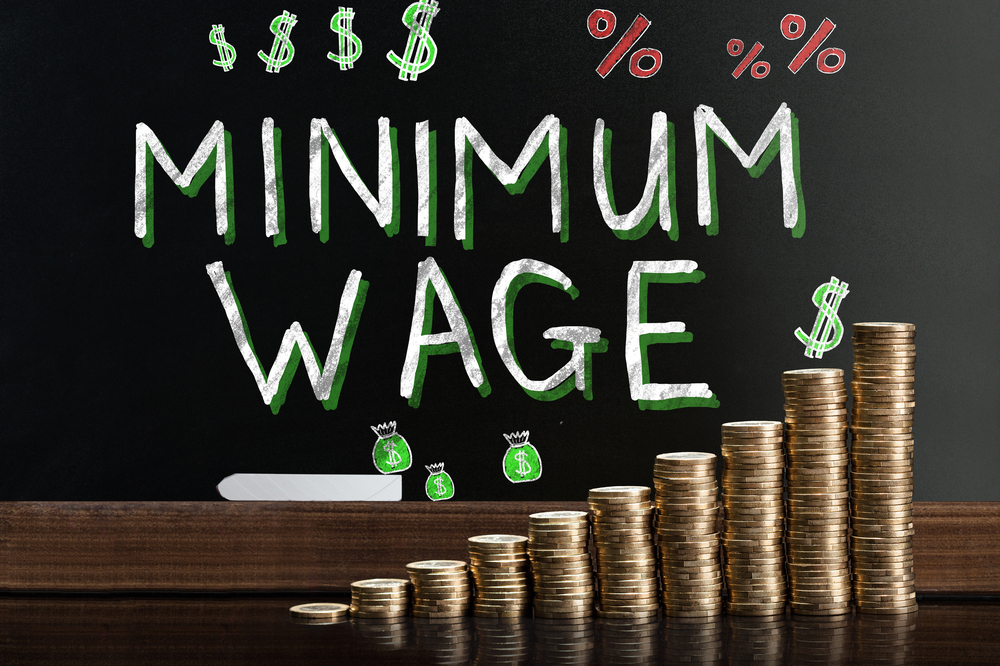One of President Joe Biden’s latest executive orders calls for the federal government to begin planning how to move toward instituting a $15-an-hour minimum wage for federal employees and private-sector workers that work on federal contracts. Such a move is in line with recent calls from the labor movement for a nationwide federal $15 minimum wage.

Biden signed an Executive Order (EO) on January 22 that, among other things, addresses the minimum wage. A fact sheet from the White House says the president is directing his administration “to start the work that would allow him to issue an [EO] within the first 100 days that requires federal contractors to pay a $15 minimum wage and provide emergency paid leave to workers.”
The fact sheet also says the EO directs the federal Office of Personnel Management “to develop recommendations to pay more federal employees at least $15 per hour.”
Biden’s EO revokes a Trump administration order that cut collective bargaining for federal workers. Biden’s order also restores competitive hiring procedures and civil service protections for more federal jobs.
Order a Signal
Jonathan Mook, an attorney with DiMuroGinsberg P.C. in Alexandria, Virginia, says the move toward increasing the minimum wage for federal employees and employees of federal contractors is in line with the agenda Biden pushed during his campaign. The move “is not that revolutionary,” Mook says.
“Fortunately, the Biden order is not a mandate for government contractors to pay $15, which could be devastating for some, especially those that provide food, janitorial, and cleaning services for the government, especially since the effects of the pandemic are still with us,” Mook says. Instead, the Biden order “is more in keeping with a goal to concretely move toward” the labor movement’s push for a $15 minimum wage.
“We shall have to wait and see how this all plays out, but at this point, Biden’s executive order sends a clear signal that a $15 minimum wage definitely is on the horizon, and all employers need to assess the impact such a minimum would have on their bottom line and make their voices heard to both the Biden administration and to Congress,” Mook says.
Currently, 29 states have minimum wages exceeding the federal minimum, and a few are phasing in increases that reach or approach the $15 level for at least some workers in some parts of the states in the next few years.
Burton J. Fishman, an attorney with FortneyScott in Washington, D.C., says a $15 minimum may not have much impact on major government contractors, but it’s bound to have an impact on food suppliers and other lower-wage jobs.
Brad Williams, an attorney with Holland & Hart LLP in Denver, Colorado, also sees the executive order as a signal. “The new administration does not appear to have a current estimate of how many federal workers and contractors are currently making less than $15 per hour, so this proposed wage increase may be more important for what it signals than what it will actually accomplish,” he says.
Williams points out many federal contractors already are required to pay wages above $15 per hour in compliance with prevailing wage laws, and the prevailing wages are often based on local union wages that exceed $15 an hour for many workers.
Morale Boost
Fishman sees the part of the EO that restores collective bargaining and requires more competitive hiring practices and civil service protection for federal workers as important.
“Restoring collective bargaining rights was anticipated and in keeping with the prolabor stance of the Biden administration,” Fishman says. Also, the other provisions are designed to protect the independence of the civil service, which he calls an “enormous morale boost to permanent civil servants who have been routinely debased” by the previous administration.
Williams agrees the parts of the EO addressing collective bargaining for federal workers send a signal. “The executive order’s provisions relating to collective bargaining rights for federal employees are of a piece with broader efforts by the new administration to expand traditional labor rights of employees, since unions played a significant role in electing Biden to the presidency,” he says.
Williams notes the order followed Biden’s controversial firing of Peter Robb from his position as general counsel for the National Labor Relations Board (NLRB).
“This suggests that Biden wants to put his stamp on the NLRB as quickly as possible, even if it means further politicizing the agency,” Williams says. “The president’s executive order is also likely just the opening salvo in a barrage of prolabor initiatives that we should expect to see in the coming years, including new proposed legislation that would weaken right-to-work laws and employers’ ability to replace striking workers.”
Tammy Binford writes and edits news alerts and newsletter articles on labor and employment law topics for BLR web and print publications.
